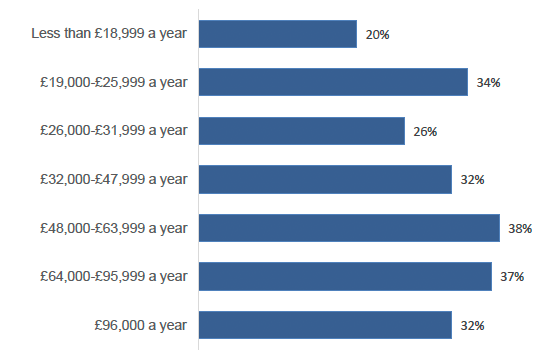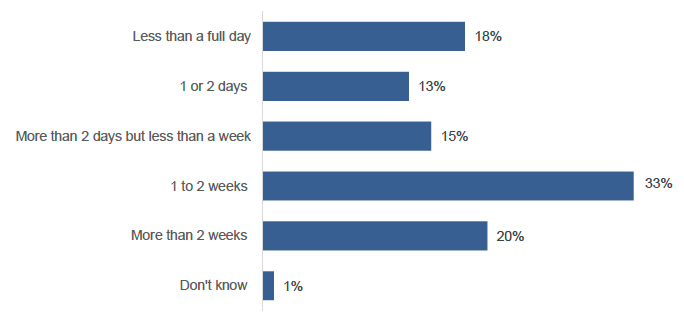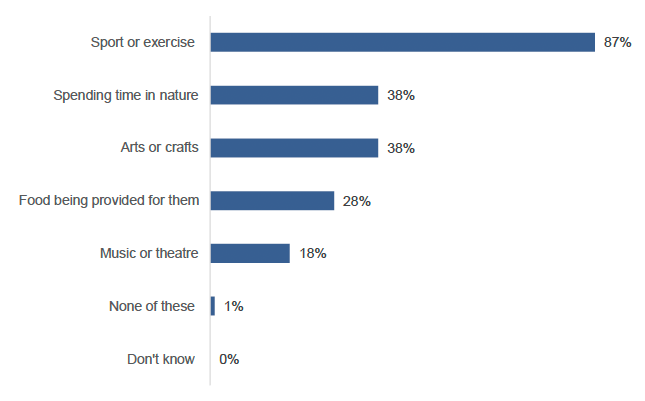Get into Summer 2021 evaluation: parents omnibus survey - report
Get into Summer 2021 evaluation - parents omnibus survey.
2. Participation in summer activities
Overview of participation
Overall, a third of families (32%) reported having at least one child who took part in free or low-cost summer activities.
Participation was higher amongst families with:
- three or more children (47% vs 35% of 2 child households and 23% of 1 child households)
- those with younger children (46% of where child was aged from 0-4 vs 38% aged 5-11 and 21% aged 12-17)
- those from the highest income households (32% compared to 20% amongst children from lowest income households).

QSummer1. Which, if any of your children participated in any free or low-cost organised activities over the summer? This could be one-off activities, or activities lasting several days or weeks, like holiday clubs. Base: all participants with children aged 4+ (871)
Participation was evenly distributed in terms of areas, with no marked difference in participation in terms of where people live. Similar participation rates were recorded by urban or rural areas or by area of deprivation (SIMD).
Time spent on activities
Those who participated in activities, were asked about the length of time their children had spent doing them. Most commonly children participated for one to two weeks (33%) or longer than that (20%). For a sizeable proportion of parents (31%), engagement in activities was limited to under two days. There did not appear to be a relationship between time spent on activities by children and benefits reported.
Details of time spent in summer activities can be seen in figure 2.2.

QSummer2. In total, how long did your child spend doing free or low-cost organised activities or holiday clubs this summer?
Base (all participants with at least one child who took part in organised summer activities): 282
Generally the time spent on activities was consistent across sub-groups. The most notable difference is between families who live in urban and rural areas. Children living in urban areas tended to spend longer in activities compared to those in rural areas. 38% of children in urban areas spent between 1 and 2 weeks taking part in organised summer activities. In rural areas 25% of children spent 1 to 2 weeks. Similarly, 20% of children in urban areas spent more than 2 weeks taking part in activities compared to 16% in rural areas.
Types of activities offered
Parents were asked about the types of activities their children took part in over summer. The most common type of activities involved sport or exercise (87%). The least commonly reported activity was music and theatre, which were part of 18% of activities parents in the survey reported.

QSummer2b. Did the free or low-cost activities they took part in involve any of the following
Base (all participants with at least one child who took part in organised summer activities): 282
The types of activities children took part in during activities was relatively consistent across sub groups. There were, however, differences in take-up of activities involving food reported by deprivation and employment status:
- 47% of those in the most and second most deprived areas by SIMD quintile reported attending activities which involved food, compared to 15% and 17% in the second and least deprived areas respectively.
- Almost half (45%) of children who attended activities from non-working families went to activities providing food, compared to 24% from full-time working families and 26% of part-time working families.
Contact
There is a problem
Thanks for your feedback